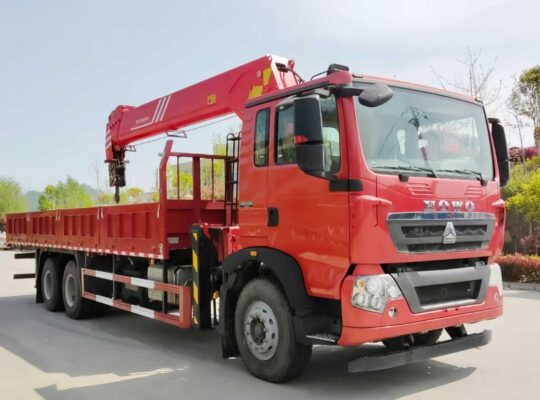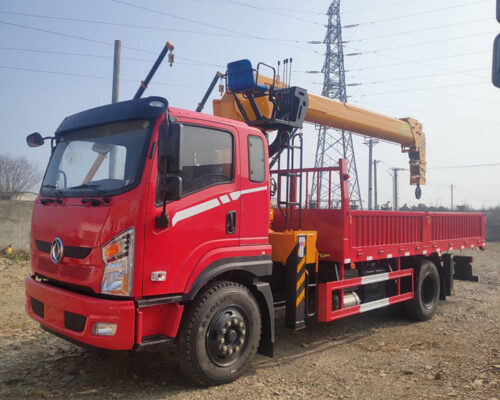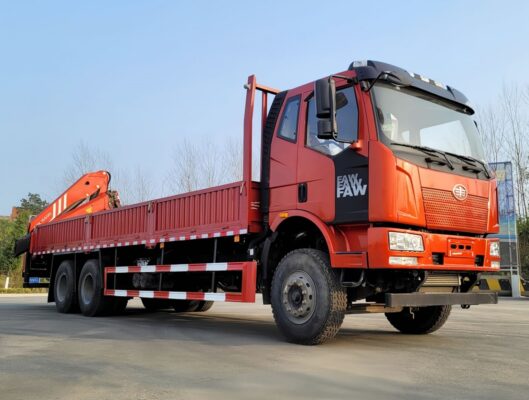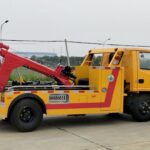Although tow trucks have different functions, hydraulic winches are essential components for lifting and towing. Therefore, they are a crucial functional part of tow trucks. Hydraulic winches are classified into light and heavy types based on the truck’s tonnage. The most common types of hydraulic winches are the worm gear and planetary gear reduction types. The basic working principle involves the hydraulic motor driving the winch gear, then using a reducer to decrease speed and increase output torque, thus achieving the winch’s towing capability. Most tow trucks are equipped with medium-light hydraulic winches due to their cost-effectiveness. On the other hand, planetary hydraulic winches, which have a more complex structure, offer a higher transmission ratio but come with higher production costs and are used for heavy-duty tow trucks.

As an important component of tow trucks, hydraulic winches are prone to various faults during use. The most common issues and their solutions are as follows:
1. Motor or Winch Oil Leakage: This is mainly due to prolonged high-load operation, which causes wear on sealing elements or loosening of connecting bolts.
Solution: Replace the sealing elements and tighten the connecting bolts.
2. Clutch Engagement Problems: This issue may be caused by misalignment of the winch clutch pawl or problems with the clutch operating mechanism.
Solution: Rotate the drum to adjust the pawl to the appropriate position, check the clutch lever for faults, or replace it.
3. Severe Winch Vibration or Unstable Operation: The main causes of this fault are unstable load on the winch or improperly fixed steel cables.
Solution:Arrange the steel cable properly (add weight to the hook to avoid unloaded steel cable).
It’s important not to wait until a fault occurs to think about maintenance. Regular maintenance of the winch is crucial for safe operation. Proper use and maintenance ensure the safe use of the winch. Regularly replace the lubricant in the winch box, at least once a year. Frequently check the winch and motor for oil leaks. Regularly inspect the winch bolts for looseness. Periodically check the steel cable for wear and breakage, and replace it early if any hazards are found. Regularly lubricate the steel cable, and if the steel cable exceeds its service life or is damaged beyond use, replace it as soon as possible. In short, following proper operating and maintenance procedures is key to ensuring the normal operation of the tow truck winch.

Preventive Maintenance for Tow Truck Hydraulic Systems
In addition to troubleshooting and addressing specific faults, implementing a preventive maintenance schedule is vital for the longevity and reliability of the hydraulic winch system:
1. Regular Inspection: Conduct visual inspections of all hydraulic components, including hoses, connections, and fittings, to detect any signs of wear, damage, or leaks.
2. Hydraulic Fluid Maintenance: Regularly check the hydraulic fluid level and quality. Replace the hydraulic fluid according to the manufacturer’s recommendations to ensure optimal performance and prevent contamination.
3. Filter Replacement: Replace hydraulic filters at regular intervals to prevent contaminants from entering the hydraulic system and causing damage.
4. Temperature Monitoring: Monitor the operating temperature of the hydraulic system. Excessive heat can degrade hydraulic fluid and cause premature wear of components. Ensure that the cooling system is functioning correctly.
5. Pressure Checks: Regularly check the hydraulic system’s pressure to ensure it operates within the specified range. Abnormal pressure readings can indicate potential issues that need to be addressed.

Safety Tips for Operating Tow Truck Winches
Safety should always be a top priority when operating tow truck winches. Here are some essential safety tips to keep in mind:
1. Training: Ensure that all operators are properly trained in the use of the winch and understand the safety protocols.
2. Personal Protective Equipment (PPE): Operators should wear appropriate PPE, such as gloves and safety glasses, to protect themselves during winch operations.
3. Clear Communication: Maintain clear communication with all team members involved in the towing operation to coordinate movements and avoid accidents.
4. Load Limits: Never exceed the rated load capacity of the winch. Overloading can cause equipment failure and pose serious safety risks.
5. Anchor Points: Use secure anchor points when winching to prevent the tow truck from moving or tipping over.
6. Cable Management: Keep the winch cable properly tensioned and avoid kinks or knots. Regularly inspect the cable for signs of wear or damage.
7. Emergency Procedures: Be familiar with emergency procedures, including how to quickly stop the winch and safely release the load if necessary.
By adhering to these troubleshooting guidelines, maintenance practices, and safety tips, tow truck operators can ensure the reliable and safe operation of their hydraulic winch systems, contributing to efficient and effective towing and recovery operations.









